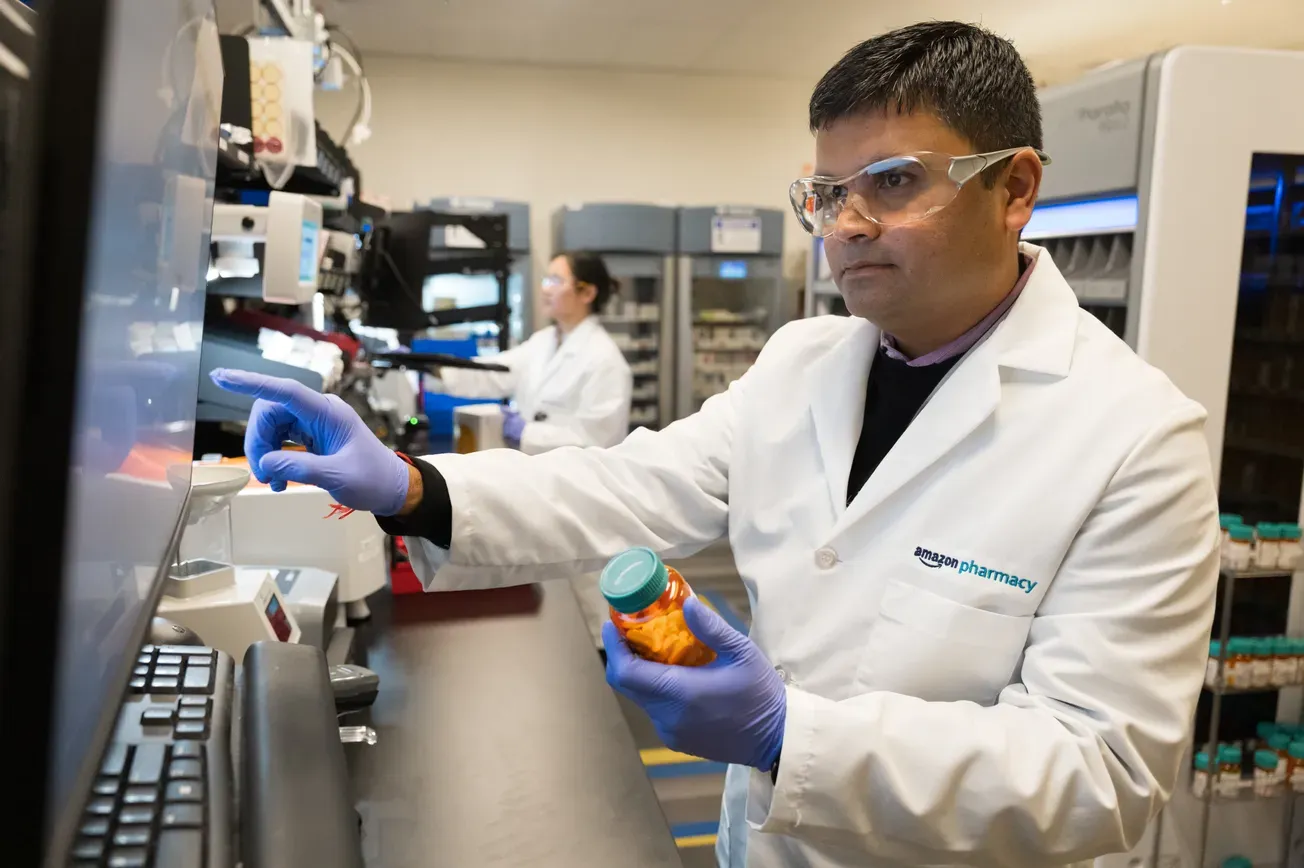By Dr. Christian Schneider
Targeted medicines are revolutionizing health care, making it possible to home in on individual disease conditions and tailor treatments to each patient’s unique disease presentation.
These transformational products can selectively target abnormal signaling pathways or biological processes underlying a given disease. Already, several targeted medicines have been developed that have improved the survival rate of patients with certain lung and breast cancers. Examples include Imatinib (Glivec) for the treatment of chronic myelogenous leukemia (CML), trastuzumab (Herceptin) for HER2 positive breast cancer, and trametinib (Mekinist) for Stage III melanoma with a BRAF V600 mutation.

Targeted medicines hold promise in many areas, offering more precise treatment options tailored to a patient’s genetic mutations or protein expression profiles. Further enabling these advances is the advent of computer-aided drug design, or computational drug discovery, which is helping developers to enhance drug discovery and development productivity.
The use of machine learning and artificial intelligence (AI) improves precision medicine and individualizes treatments even further. AI algorithms help with target identification by analyzing vast amounts of biological data, including genomics and proteomics, to more accurately identify disease-associated targets, screen drug candidates and predict important properties such as efficacy, toxicity and pharmacokinetics early in development.
Connecting therapies and
patients: biomarkers and companion diagnostics
While scientific breakthroughs have been key to the development of targeted medicines, connecting these therapies to the right patient has been made possible by technological advances, including biomarkers and companion diagnostics.
Biomarkers play an integral role in detecting or confirming the presence of a disease. In the context of targeted medicines, predictive biomarkers help to identify those patients most likely to benefit from a treatment. Equally, biomarkers can help to prevent patients from getting inappropriate treatment and avoid unnecessary associated risks.
Thousands of biomarkers have been identified and studied from a diverse set of biological sources. These include genomic biomarkers, protein-based, lipids, imaging and other molecular signatures associated with treatment response. While this technology is groundbreaking for the treatment of disease, biomarkers must undergo rigorous clinical validation studies to assess their accuracy, specificity, reliability, reproducibility and predictive value. The clinical validation studies seek to show an association between the biomarker and a given endpoint and to demonstrate the overall therapeutic value of the biomarker.
Biomarkers are largely used to assist health care providers and researchers with matching the right medication to the right patient based on that person’s biological characteristics, to monitor response to treatment and to predict treatment resistance by monitoring biomarker profiles over time.
Alongside biomarkers, companion diagnostics (CDx) have emerged as an important tool for targeted medicines by enabling the identification of patient-specific treatments. A companion diagnostic is a test to detect a predictive biomarker that shows which patients are suitable candidates for specific therapies. The information provided by a CDx is also key to controlling the safe and effective use of a therapy since it can help to determine which patients are at greater risk of serious side effects from a treatment or monitor response to a treatment.
First, though, the therapeutics developer must understand how the drug works and which biomarkers are relevant for efficacy, which will help to guide the development of the companion diagnostic to identify patients who would benefit from that therapy. This is not only important after approval but also for enrollment in clinical trials.
Given how tightly intertwined the therapy and diagnostic are, it is common for therapeutic and diagnostics companies to work collaboratively during the development process. Indeed, therapeutics companies often rely on their diagnostics partners’ expertise to support the development process.
One area where CDx plays a particularly important role today is in oncology. The identification of biomarkers associated with specific cancer types has helped to personalize treatment plans, improve patient outcomes, and prevent ineffective or potentially harmful approaches.
Between 1997 and December 2023, the Food and Drug Administration had approved 62 CDx products, the majority of which were for oncology drugs. One notable example of how CDx products have advanced treatment is in breast cancer by enabling the identification of specific biomarkers associated with tumor types. For example, in breast cancer, HER2/neu protein testing helps determine eligibility for HER2-targeted medicines such as trastuzumab. In 2023, the FDA approved Guardant360 CDx, a companion diagnostic for ER+/HER2− metastatic breast cancer with ESR1 mutation along with elacestrant, a selective estrogen receptor downregulator, to treat patients with the disease.
Similarly, BRAF gene testing is important in the selection of patients with melanoma who could benefit from BRAF inhibitor therapies.
Navigating the regulatory
complexities
The novel and complex nature of targeted medicines presents several additional regulatory hurdles for developers. For example, regulatory agencies may require extensive data on biomarker validation, patient selection criteria and long-term follow-up to support approval decisions. Regulatory authorities also increasingly require pharmaceutical companies to justify dosing regimens based on comprehensive pharmacokinetic and pharmacodynamic data that finally characterize exposure–response relationships. A personalized approach to drug dosing and administration requires rigorous scientific evidence to support a drug’s efficacy and safety.
Nevertheless, regulatory authorities are committed to bringing innovative and life-saving treatments to patients and, as such, seek to manage that balance of early access against having adequate information to support the benefit-risk balance.
To address this balance, health authorities have put in place several regulatory mechanisms such as conditional marketing authorization in the European Union and accelerated approval in the United States. Keeping in mind the urgent needs of many patients with cancer diagnoses, regulators carefully balance safety and efficacy considerations against patients’ high levels of acceptance of risk where there is an absence of effective standard treatments or when treatments’ efficacies are known to be limited.
Navigation of the regulatory pathway for targeted medicines also requires close collaboration between sponsors, researchers and regulatory authorities.
Manufacturing can also present a regulatory hurdle for companies, since different regulatory frameworks globally can make it difficult to standardize manufacturing processes. With targeted medicines, an additional challenge is balancing customization — for example, when developing a highly individualized treatment — with standardization, which can further complicate manufacturing processes and add to regulatory challenges. The FDA has emphasized the need for robust manufacturing and assurance of product quality, stating that to realize the promise of precision medicine, there is a need for “more mechanistic understanding, improved manufacturing capabilities and additional tools.” The agency has sought to address some of these challenges with a portal to support next-generation sequencing technologies, precisionFDA.
An important strategy is for companies to engage with the regulatory authorities early to gain insights into regulatory requirements and expectations. Regulators offer scientific advice early on to guide developers with their targeted medicines. For example, the FDA’s Office of Therapeutic Products encourages developers to take advantage of both formal and informal meetings during the development process. The EMA and national competent authorities (NCAs) offer guidance and direction to companies at any stage of development. Scientific advice and protocol assistance are given by the Committee for Medicinal Products for Human Use (CHMP) on the recommendation of the Scientific Advice Working Party (SAWP).
Companion diagnostics, however, will need to go through a separate regulatory pathway. In Europe, this now means going through the In Vitro Diagnostic Regulation (IVDR) and conformity assessment by a notified body. In the U.S., the FDA has issued guidance on In Vitro Companion Diagnostic Devices and encourages sponsors of both the therapy and the companion diagnostic to “request a meeting with both relevant device and therapeutic product review divisions to ensure that the product development plan(s) will produce sufficient data to establish the safety and effectiveness of both the IVD companion diagnostic device and the therapeutic product.”
There are also special procedures for the qualification of novel biomarkers in the EU. Companies can request briefing meetings with the Innovation Task Force to discuss the development of genetic biomarkers early in development. The EMA has issued guidance on the qualification process.
The future of precision
medicine
Already, there has been enormous progress with targeted medicine, which has changed the prognosis for many cancer patients. There are many more promising areas in oncology, such as immunotherapy and personalized cancer vaccines, that hold significant potential for further advancements in targeted medicine. Additionally, other areas of medicine will increasingly see targeted medicines bring hope to many more patients.
Targeted medicines pave the way for tailoring treatment to the individual, based on their genetic makeup, molecular profile and specific disease. Knowledge of specific disease conditions and genomics, along with advances in technology and computational science, will transform medicine, enabling a future based on precision medicine.
Dr. Christian Schneider is a leading authority on advanced therapies and head of biopharma excellence and chief medical officer for strategic product development consulting at PharmaLex. PharmaLex is now part of Cencora, a leading global health care company with a foundation in pharmaceutical distribution.









